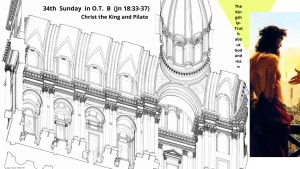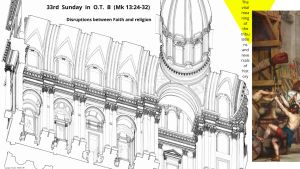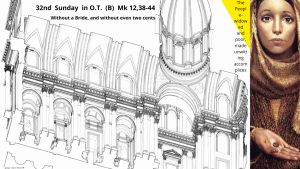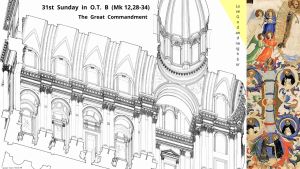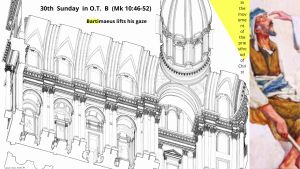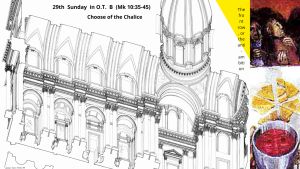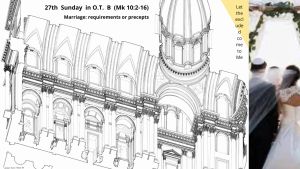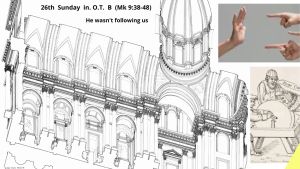
don Giuseppe Nespeca
Giuseppe Nespeca è architetto e sacerdote. Cultore della Sacra scrittura è autore della raccolta "Due Fuochi due Vie - Religione e Fede, Vangeli e Tao"; coautore del libro "Dialogo e Solstizio".
Jesus and Pilate: Truth about the King and the Man
Upheavals and things in place: between Faith and religion
Widow-people: without a Bride, and without even two pennies
Listen Israel: Love God and Neighbor
BRIEF REFLECTION ON 'ENVY' (by Francesco Giovannozzi, psychologist and psychotherapist)
Some days I was in a bar. There were some young people talking about their daily problems, when at a certain point the issue of envy came up.
The discussion on this topic was also taken up by the people who were there and someone joking or not (who knows) expressed: but how do you remove it?
I was reminded of old magical and superstitious practices from when I was a child. Or of all those times I have heard people say in the face of a failure or unfavourable situation: 'I must go and have envy removed'. And not only from simple people, but also from people with a certain degree of culture. As already argued in previous articles, even the man of science has his irrational side.
In the Treccani dictionary under envy we read: 'An unpleasant feeling for a good or quality of others that one would like for oneself, often accompanied by aversion and resentment for the one who possesses it instead'.
It is a feeling we all have and which we refuse to acknowledge because it is often something we are ashamed of. We often believe that this feeling has occult powers and therefore believe that pseudo-magical practices can free us. Nothing could be more illusory.
Melanie Klein wrote the book 'Envy and Gratitude' where she addresses this issue.
This author investigated in depth the first relationship the child has with the mother's breast and then with the mother when it manages to perceive her as a total object. A primary relationship that can also be difficult due to maternal causes: non-acceptance of the baby, difficulties in childbirth, or reluctance to breastfeed.
But there are also causes that can arise from the baby, and among these is envy, which prevents a good relationship with the breast.
The baby may feel a great deal of anger towards the breast, whether it is perceived as good, i.e. that it satisfies him, or as bad - because it does not satisfy his needs and generates envy because it possesses something he does not have.
And so the infant tries to harm him as he can, by putting his naughty bits in (spitting, urinating, biting, etc.).
In a person a strong presence of envy can damage his way of life, and his relations with others; not because of external causes, but because he cannot understand the good object.
He feels that he has ruined it and made it bad.
He cannot feel its good feelings, and this increases his envy and hatred.
In contrast, the child who is more able to feel love and gratitude for the gift he has received, experiences the good object more.
Consequently, gaining confidence in his own goodness, he will overcome envy and hatred more easily.
The person suffering from envy can hardly enjoy the joys of life, because the relationship with the mother and then with any other object of love is damaged.
Positive feelings encourage the child to keep the milk received as good.
Experiencing gratitude is the basis of pleasure, and later he will be able to establish satisfying relationships, because destructive desires are diminished: his anxieties will be less.
Envy does not make us live well, for the simple reason that it goes against life - and the outside world becomes our enemy.
Or it makes us live a 'breast' that is too idealised or too bad.
A person with a good capacity to love can love the 'object' while seeing its limitations.
One positive thing that envy can operate in us is the possibility of improving ourselves.
Often, for those who seek help from a professional, among the various issues that the person brings to analysis, this problem must be addressed.
If the analyst is well aware of these destructive parts, he will be able to lead the person in front of him to recognise the negative parts, and to mitigate them with love and positive feelings.
The well-adjusted person will bear his or her own feelings of guilt better, and will not need to see them on others. .
Very often it is difficult to bear ourselves.
Francesco Giovannozzi Psychologist - Psychotherapist.
Barthymeus looks up from a middle life
Choice of the Chalice, or the front row
One you miss: leaving everything behind and experiencing the reversal
Marriage and repudiation: needs or precepts?
The guy is not following us? To be investigated!
«Even through Joseph’s fears, God’s will, his history and his plan were at work. Joseph, then, teaches us that faith in God includes believing that he can work even through our fears, our frailties and our weaknesses. He also teaches us that amid the tempests of life, we must never be afraid to let the Lord steer our course. At times, we want to be in complete control, yet God always sees the bigger picture» (Patris Corde, n.2)
«Anche attraverso l’angustia di Giuseppe passa la volontà di Dio, la sua storia, il suo progetto. Giuseppe ci insegna così che avere fede in Dio comprende pure il credere che Egli può operare anche attraverso le nostre paure, le nostre fragilità, la nostra debolezza. E ci insegna che, in mezzo alle tempeste della vita, non dobbiamo temere di lasciare a Dio il timone della nostra barca. A volte noi vorremmo controllare tutto, ma Lui ha sempre uno sguardo più grande» (Patris Corde, n.2)
Man is the surname of God: the Lord in fact takes his name from each of us - whether we are saints or sinners - to make him our surname (Pope Francis). God's fidelity to the Promise is realized not only through men, but with them (Pope Benedict).
L’uomo è il cognome di Dio: il Signore infatti prende il nome da ognuno di noi — sia che siamo santi, sia che siamo peccatori — per farlo diventare il proprio cognome (Papa Francesco). La fedeltà di Dio alla Promessa si attua non soltanto mediante gli uomini, ma con loro (Papa Benedetto)
In the communities of Galilee and Syria the pagans quickly became a majority - elevated to the rank of sons. They did not submit to nerve-wracking processes, but spontaneously were recognizing the Lord
Nelle comunità di Galilea e Siria i pagani diventavano rapidamente maggioranza - elevati al rango di figli. Essi non si sottoponevano a trafile snervanti, ma spontaneamente riconoscevano il Signore
And thus we must see Christ again and ask Christ: “Is it you?” The Lord, in his own silent way, answers: “You see what I did, I did not start a bloody revolution, I did not change the world with force; but lit many I, which in the meantime form a pathway of light through the millenniums” (Pope Benedict)
E così dobbiamo di nuovo vedere Cristo e chiedere a Cristo: “Sei tu?”. Il Signore, nel modo silenzioso che gli è proprio, risponde: “Vedete cosa ho fatto io. Non ho fatto una rivoluzione cruenta, non ho cambiato con forza il mondo, ma ho acceso tante luci che formano, nel frattempo, una grande strada di luce nei millenni” (Papa Benedetto)
Experts in the Holy Scriptures believed that Elijah's return should anticipate and prepare for the advent of the Kingdom of God. Since the Lord was present, the first disciples wondered what the value of that teaching was. Among the people coming from Judaism the question arose about the value of ancient doctrines…
Gli esperti delle sacre Scritture ritenevano che il ritorno di Elia dovesse anticipare e preparare l’avvento del Regno di Dio. Poiché il Signore era presente, i primi discepoli si chiedevano quale fosse il valore di quell’insegnamento. Tra i provenienti dal giudaismo sorgeva il quesito circa il peso delle dottrine antiche...
Gospels make their way, advance and free, making us understand the enormous difference between any creed and the proposal of Jesus. Even within us, the life of Faith embraces all our sides and admits many things. Thus we become more complete and emancipate ourselves, reversing positions.
I Vangeli si fanno largo, avanzano e liberano, facendo comprendere l’enorme differenza tra credo qualsiasi e proposta di Gesù. Anche dentro di noi, la vita di Fede abbraccia tutti i nostri lati e ammette tante cose. Così diventiamo più completi e ci emancipiamo, ribaltando posizioni
duevie.art
don Giuseppe Nespeca
Tel. 333-1329741
Disclaimer
Questo blog non rappresenta una testata giornalistica in quanto viene aggiornato senza alcuna periodicità. Non può pertanto considerarsi un prodotto editoriale ai sensi della legge N°62 del 07/03/2001.
Le immagini sono tratte da internet, ma se il loro uso violasse diritti d'autore, lo si comunichi all'autore del blog che provvederà alla loro pronta rimozione.
L'autore dichiara di non essere responsabile dei commenti lasciati nei post. Eventuali commenti dei lettori, lesivi dell'immagine o dell'onorabilità di persone terze, il cui contenuto fosse ritenuto non idoneo alla pubblicazione verranno insindacabilmente rimossi.


